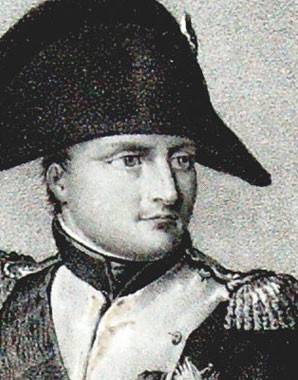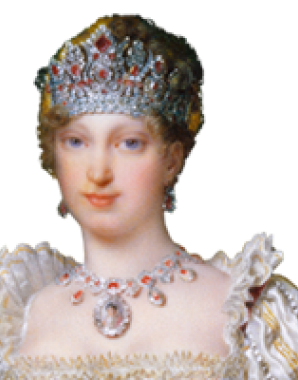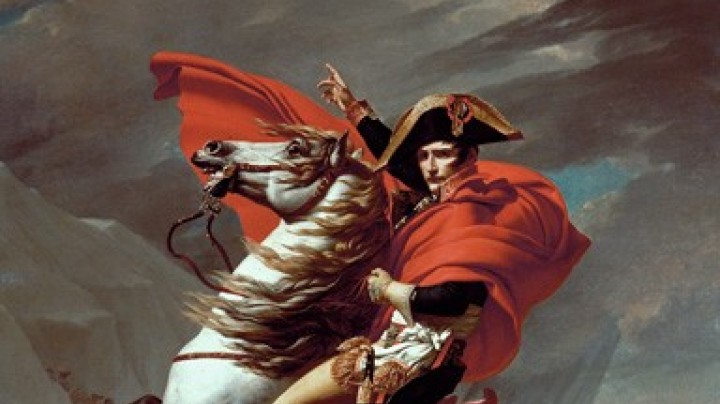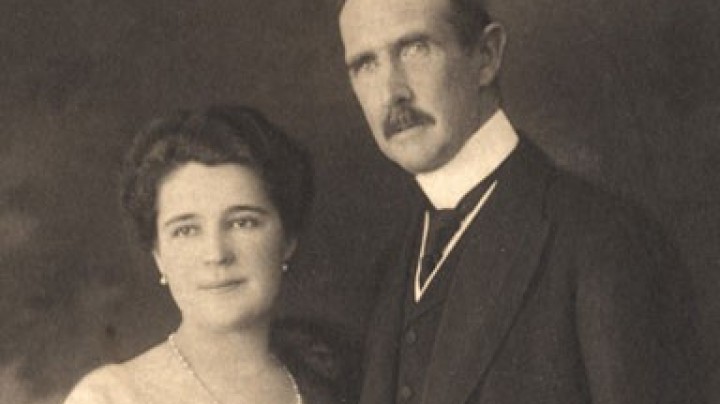The handover of the bride
Two days after the marriage "per procurationem" (marriage by proxy) in the Church of St Augustine in Vienna on 11th March 1810, Marie Louise left the Austrian capital city and set off on the journey to the official handover in France.
Accompanied by her Austrian entourage they set off towards the west, but at the border between Austria and Bavaria a French cavalry division took over as escort. This once again demonstrated the inequality in power, for the border had only recently been moved, to Austria's disadvantage. The Habsburg Empire had had to accept some painful losses of territory, for example, the Austrian Innviertel had (since 1779) been given to Bavaria, which was allied to Napoleon.
The handover took place in St Peter am Hart near Braunau on 16th March.
The setting for the formal ceremony was a specially erected pavilion comprising three festively decorated rooms: adjoining the central hall where the handover took place a room for the Austrian delegation had been set up to the East, exactly matching the one for the French in the West.
In the central hall hung a throne canopy made of precious materials, and beneath it a throne on which the future Empress of France took her place. Marie Louise wore a richly embroidered dress of gold brocade and a diamond encrusted miniature portrait of Napoleon. The bride was handed over to the French commissioner, Maréchal Berthier, by the Imperial Obersthofmeister Prince Trauttmansdorff. During the ceremony the marriage contract was signed, the content being read out aloud to those present.
Thereafter the Austrian entourage was allowed to kiss the hand of Marie Louise, who had now become a Frenchwoman, one last time before the bride was handed over to her new French court. In her letters to her father Marie Louise wrote that she had found this moment particularly painful as she was now removed from her familiar environment without any possibility of return.
Marie Louise was now led into the French part of the pavilion, where she was greeted as part of the family with an embrace from Napoleon's youngest sister, Caroline. Caroline, who was married to Maréchal Murat, was made Queen of Naples by Napoleon in 1808. This was a circumstance which once more demonstrated her situation quite clearly to the Habsburg Marie Louise – after all, her grandmother, Maria Carolina (a daughter of Maria Theresa who was married to King Ferdinand of Bourbon-Naples), had been driven from the Neapolitan throne by Napoleon's troops. Maria Carolina was filled with hatred for Napoleon and when she learned that her granddaughter was to be married to her adversary she described herself as "the devil's grandmother".
From here they travelled to the next town, Braunau am Inn, where overnight accommodation had been prepared for the young Empress. Upon arriving here she was provided with complete new set of clothing in the French style. The following morning the convoy of 36 luxurious coaches set off toward France.















